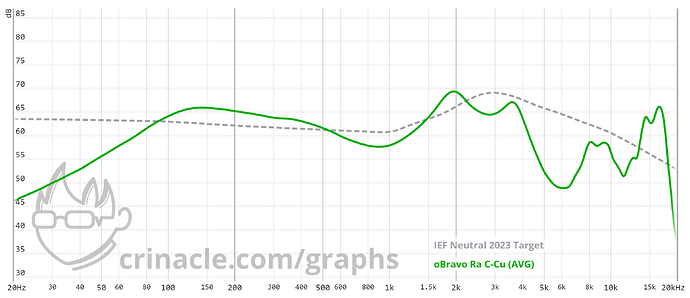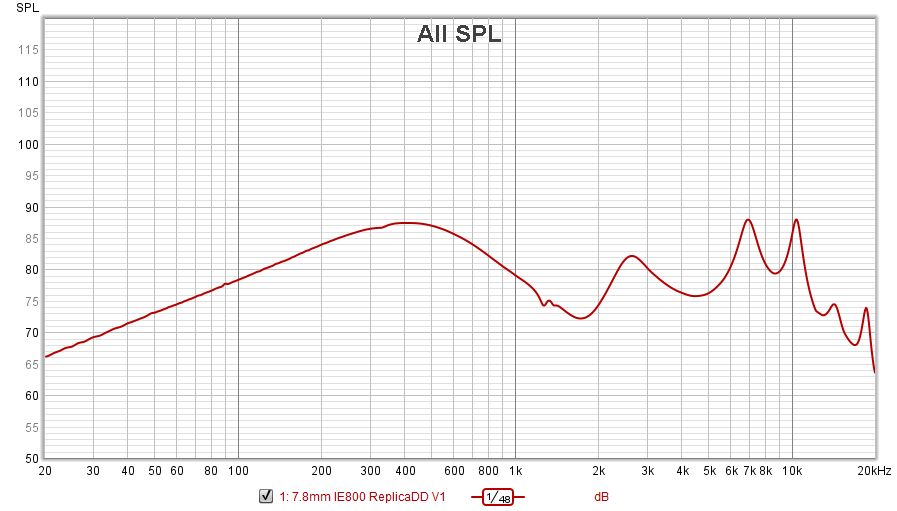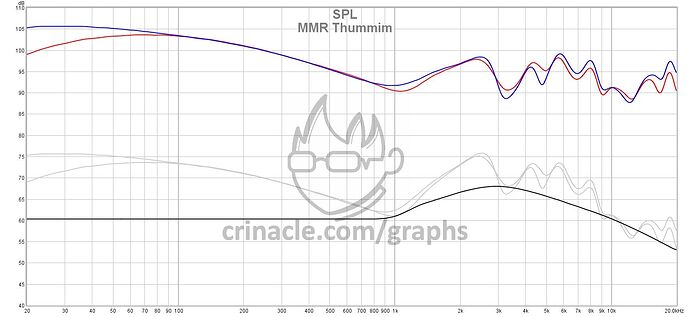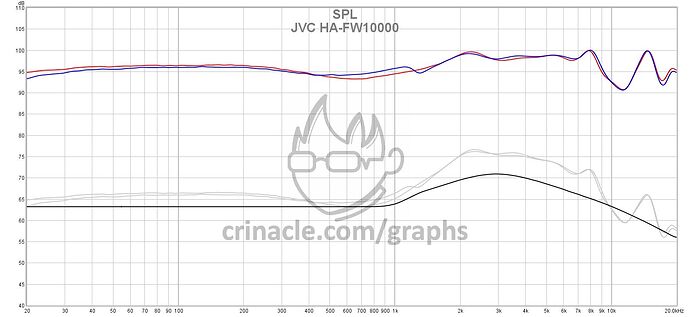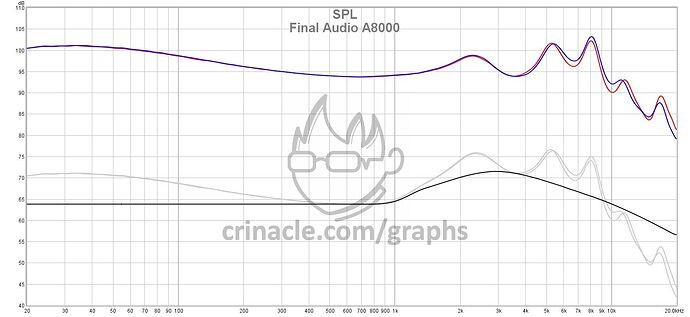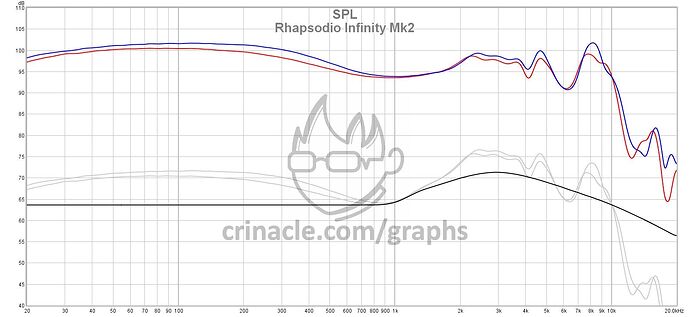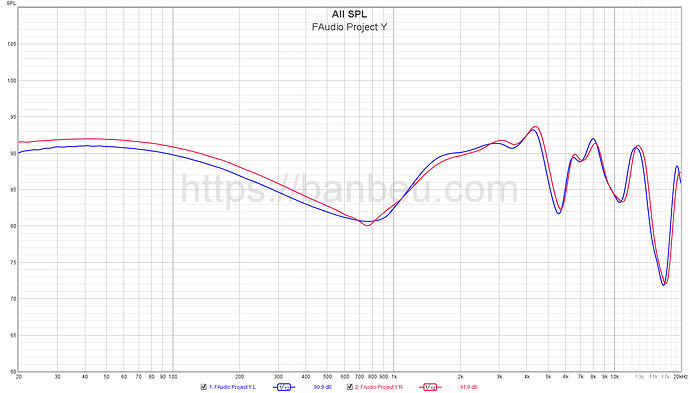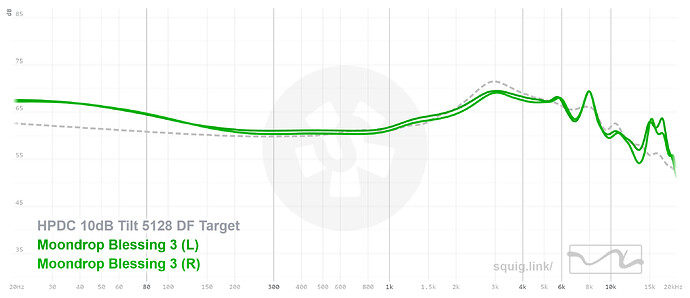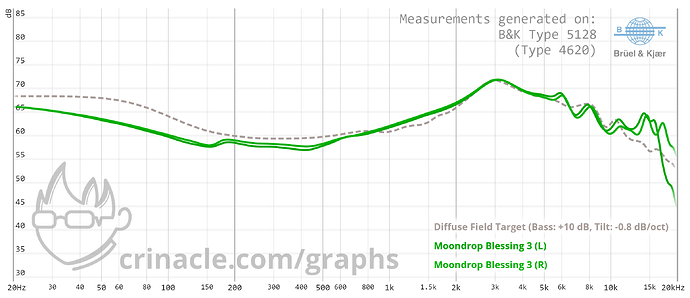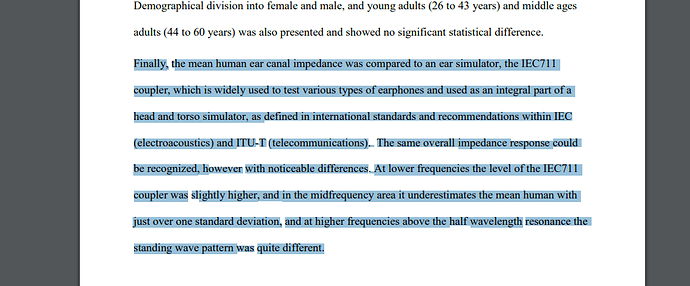Boring folks to death can result in a ban apparently ![]()
Someone banned him? I didn’t
No lol just some English humour ![]()
Amen, brother ![]()
Thank you for taking the time to give an actual thoughtful and concise point.

With that said, I do recommend just blocking/ignoring him ![]()
A studio monitor would be idea to be neutral to help account for the varying devices it would play on. It does not mean it has to be neutral. The word monitor is simply defined as a device used for observing a process. Wouldn’t be idea to mix on a bass boosted speaker only to then have it played on mostly consumer devices that are further bass boosted. So a good studio sound engineer would mix on neutral monitor and then let the listener adjust the sound through EQ or different listening devices. They can vary from neutral like most studio monitors or boosted in the bass like a lot of consumer devices. How you listen is your preference and any thought to describe it is solely an opinion of your preference on how like the music to be monitored.
IEM simply just means In Ear Monitor. You can’t look so deep at the word monitor. Monitor as mentioned above being a device used for observing a process. It’s just an in ear device used to observe music in this case. The IEMs we listen to today have a large history in Stage Monitoring not Studio Monitoring where every member would need a device particularly crafted to observe and/highlight particular areas of the band. Id bet money that for us is here most those Stage Monitors to include in ear would sound horrible for day to day listening.
It’s hard for reviewers because most all of the terms used in forums and reviews to describe our opinions have no definition in audio. What is dark and and what decibel, curve, frequency yada does it begin at. Same goes for bright. Where does a warm or cold sound for vocals start or begin or even what’s vocal forward? Every review and ranking will always be someone’s opinion if the set is not dead neutral when measured. That’s why you have to follow the reviewers and get to understand them and their preferences.
@VIVIDICI_111 is a standup gentleman and has brought strides of knowledge and feedback into this forum. He recently received the Top and reviewed it. I couldn’t be any further apart in agreeing on his thoughts. It’s bass wasn’t enough, it was to bright on cymbals and wayyy to vocal forward. It was apparent though that from understanding his preference through communicating with him frequently and watching his reviews why he came to opinions on it and conclusion he did and really enjoyed the set using mostly completely opposite terms I would have. Neither of our views are wrong because its all preference and our preferences define how we use said terms like bright or dark.
I’d also like to add that the Harman target, aka “graph”, was literally based off of SUBJECTIVE preferences from the test subjects ![]() So the “objective” graph some hold to such high regards was literally created from subjectivity
So the “objective” graph some hold to such high regards was literally created from subjectivity ![]()
![]()
![]()
Anyways… let’s just leave things as it is I feel bad for the guy.
Back to IEM talk!
Bruh.
This must be the “ideal” graph the gentleman earlier was talking about ![]()
never denied this, read my comments above. my point was neutral signature is valued higher that colored ones, thats just it.
watching reviewers talking about iems are interesting if its geniue, you see how they explain the frequency response in words.
Yeah, exactly this.
Regarding “that” user, yes, you’re right. The correct course of action is to simply block him as he’s just argumentative for the sake of arguing. Perhaps there are some personal things going on and he feels this forum to be his “outlet”
to have the same results of a top tier speaker, you need money to achieve the insane power that speaker has, to manage the low distortion of that particular speaker and quality of the speaker parts. cheaper monitors go with the same mindset of achieving flat responses but money will be the stopping point for them.so they end up with lower power and higher thd. for their unever response though i don’t know really, its the crossover problem, or other thinks that i don’t know. if you know tell me here.
100% agreed, and most even don’t mix or master on only 2 monitors.
you need to measure the room, use dsp and eq for room corrections, though agreed again.
agreed but can get close. but not fully achieve it yet.
agreed again, you can get close but cannot achieve the same exact results.
the way an speaker responds in a room vs in a well built and treated studio will differ.
agreed, well with dsp and eq you can get a soundbar to sound flat but it will never have stereo image of a properly angled monitors.
never denied this, read my comments above.
this is true, but my point was this, don’t base your purchasing decisions on a reviewers opinion. although to be a better reviewer you need to be as objective as possible.
and never said he got paid for that iem, read my comment better.
and i never did for him really, as i mentioned that he paid for the iem and is actually a victim of that companies bad qc, but him ranking it highly was a problem for me.
most of your points are actually valid and would never disagree with you. probably the best response here by faaar, was actually informative useful for me unlike others… .
anyways, thank you for taking your time to reply every single sentence of my comments, and teaching me a few points that i didn’t know.
@M0N
now i get why you hate neutral/flat tuned iems that much because these are at the top of your ranking list.
There’s a lot of aspects that limit a speakers performance due to price, things like quality of materials for the box and the driver, quality of components and crossover design, physical size and isolation/vibration requirements, and so on. Just saying that if there were a theoretical agreed upon best, that most speakers would be aiming for the exact same goal, but they aren’t if you look at how wide the market is. I’m not a speaker designer so I wouldn’t know how you make a speaker on the same level of performance as one many times it’s price, that’s a question that everyone has been looking to solve and something that many claim to (but almost never do from my experience). If everyone else can’t find the solid answer, I sure can’t lol
Generally having a solid set of far field, a few nearfield solutions, some consumer devices, and a few pairs of more reference foucsed headphones will get the job done, but also depends on what the engineer is really doing, they need to know the demographic of who the content will be consumed by, and adjust their studio situation accordingly.
Of course, although generally if you can avoid using dsp and just naturally acoustically correct issues that’s going to be preferable, but a high quality DSP route tends to be less hassle and more budget friendly.
Personally from what I’ve heard, I don’t really think we’re all that close, but I will say it’s gotten close enough for me to be plenty satisfied with what exists many times over lol.
Yes, different room treatment is needed for different rooms, and even then you’ll want to also involve the speaker in the equation for optimization as well. Generally hifi setups are more lively room wise being less highly treated and less even, and more variety in rooms, whereas pro stuff tends to be a bit more standardized and more deadened as well, although in either case you shouldn’t get close to something like an anechoic chamber level of treatment since speakers aren’t designed to actually sound good in that environment, and that’s just not going to be realistic or representative of real life in most cases (which is why measurements of a speaker in or simulating that environment to me are somewhat questionable in usefulness since it’s so dependent on the room in reality, at least this isn’t much of an issue with headphones or iems).
You typically aren’t going to dsp or even mess with that soundbar if you’re using it for studio work, you’re going to leave it as is just as the consumer that’s going to be using it to listen to your work will be using it as. Might even go into it’s settings and give it a bass and treble bump as well just because consumers do that. Wasn’t meaning to say that it’s suitable to use a soundbar as a neutral reference, but was trying to say that a monitor isn’t only for one single goal and shouldn’t all be going for the exact same thing, in this case the soundbar would be monitoring how your mix sounds on consumer gear
Not saying you did, but just trying to say that the reasons why people enjoy things can be highly different, and that’s why saying something is universally “best” from really any standpoint is just not worth doing, because best is highly subjective, since in the end the goal is actually listening to the stuff, and what you might view as objectively best, some might view as subjectively bad or even objectively bad, basically just trying to note how it really all comes down to preference in the end and there really is no overarching “best” in most respects
Truthfully, that’s really what reviews are used for though. People look around and find reviewers they feel are trustworthy and their preferences align with theirs, and tend to use their experiences as some level of influence for purchasing decisions. That’s why they exist on a fundamental level, to provide insight for people to make purchasing decisions off of. I totally agree that it’s unwise to take only one person’s opinion as gospel or blindly buy what someone who’s popular suggests, you really need to do your homework as someone in the market and look around and get a variety of opinions from people from different backgrounds and different context.
Personally, I think reviews can range from completely trash/worthless, to wildly helpful. You just have to find people who have similar tastes to you, people who’s experience lines up with your own, people who don’t have an immediate motive or bias (which is something that’s going to involve even more research), and then get multiple takes on something and decide if you think it’s right for you. Imo reviews have the potential to be wildly more helpful than a graph or some measurements in actually figuring out what you’re getting, but that’s just based off my own personal experience. Either way, it’s going to take a lot of work from the consumers part to sort though everything, and really, if they’re the ones that are just blindly buying whatever and worshiping some reviewer, I don’t see how it’s the reviewers fault as long as they aren’t the ones encouraging/promoting that behavior themselves. There’s people who review for the sake of creating a cult of personality or for internet fame or potential money or hell even just to screw with people. And there’s reviewers that don’t, that just review for the enjoyment of the hobby and to try and help others. To some level, it’s really up to the consumer to figure that out on their own, and this is also true of objective data, you want to get multiple sources on things since different testing methodologies, instruments, and presentation can bias data and change the overall perspective you might have as well.
I understand your frustration with some reviewers being unhelpful to you if you only blindly follow measured data, but at the same time there are people who feel entirely opposite and have had better success in finding things they like through reviews rather than only objective data. Goes both ways, different perspectives, what works for making buying decisions for one person may not work for another, you just have to figure out what works better for you through your own experiences.
I mean, you are basically accusing him of putting the iem up there because of other factors than just his own opinion.
So not really accusing him of being paid off, but you are pretty much saying that he put it there in bad faith unless I’m reading this wrong, which I very well could have been. Just came across to me as overly aggressive and saying he’s basically entirely wrong for putting it at the top of his list. You don’t have to agree with someone’s take on something, but I really don’t think it’s alright to then call that person wrong or accuse them of essentially shilling something for the sake of shilling something, as shilling doesn’t always have to involve money. Don’t see how you really feel as though you have the right to tell him to change is opinion just because you disagree with it
Don’t really hate neutral or flat measuring iems, but I will absolutely say my own tastes in iems is a bit unique or nitche (which is why I don’t really participate in iem discussion much, because there’s not many here who have heard these units, and/or prefer some more traditional approaches), but absolutely wouldn’t say that I hate neutral/flat tuned iems. Personally for my own use cases, I prefer iems that are overall a bit more colored than neutral in most aspects, since I mainly use iems only portably and am more looking at things that might not be 100% accurate but potentially more enjoyable. If I were to want something that’s really more generally flat and closer to what might be called transparent, I’d rather be using headphones or speakers instead
Personally for more hardcore neutral tuned iems that I actually enjoyed, on the more studio neutral/df neutral tuned side of things I really liked the stereopravda spearphone sb7, inear prophile 8, ultimate ears reference monitor, etymotic er4xr or er2xr, jvc fw10000, and so on. All of those from what I remember measure more traditionally neutral, but of course that’s only one aspect, what’s considered neutral will really vary from person to person, and different types of transducers like iem vs headphone vs speakers will measure differently in what is considered neutral. A DF neutral tuning for an iem will measure differently than a DF neutral tuned headphone for example
You even included the stereopravda and jvc, both of which measure pretty well DF neutral albeit a bit brighter, if you have a different target for studio neutral that’s not going to line up, but I’d say they’re pretty neutral flat. Of course things like the mentioned MMR and faudio are absolutely not, but those are ones that really tread the line for me being potentially too colored, but don’t cross it for one reason or another, or bring some sort of other value you won’t realize from the fr graph alone. The reason I have the iems I put at the top at the top are not due to frequency response or fundamental tuning but more stronger focuses on technicality.
Really for myself, I’m not picky about tuning whatsoever and more heavily prioritize things that are more technically proficient, way more on the intangibles side of things. I don’t entirely disregard basic fr, but I think the higher you move up in IEMs the less and less it actually contributes to the overall experience and color of the sound, that the sound is much more colored by the intangibles such as stage/space and presentation, dynamics, timbre (not tonality, timbre is more reliant on the time domain), detail and resolution, and so on. Things that really aren’t conveyed in a meaningful/usable manner on a graph, and largely justify the increases in prices as you move up to higher end iems. I personally think getting a good basic fr/tonality in the lower end/budget side of things is more important to getting a overall good sounding iem (although this opinion has been changing as budget iems increasingly have been getting better and better at tuning and flaws in technical performance are starting to show more, in the past cheaper iems just really couldn’t nail down reasonable tunings from my experience lol), but really when you’re at the point of the higher end, the FR of the unit really isn’t why you’re buying it in the first place and the rest of the intangibles color the sound a lot more and that’s what you pay for. It’s pretty much that way entirely for my list even outside of iems, I’m much more impressed with technical proficiency than I am about tuning, but that’s just me (and an entirely different discussion altogether)
In my own personal list, I pretty much tried to note down everything I could think of when it came to what aspects of sound I care about and focus on, my general perception and philosophies I subscribe to in audio, any potential biases or added context that influence how I feel about a piece, and so on. I wanted someone to be able to read the long ass disclaimer section of the list and fully understand where I was coming from, how everything works, and gain most of the information they would need to interpret the list. It’s absolutely not going to agree with everyone, and I wanted people to be able to see all that right up front and let the reader decide if they want to continue or not. If you really want to sort of understand what I value in audio and why some things end up on that list, I’d suggest reading through the disclaimer section and potentially the rambling section at the bottom. Not saying you have to agree with it, but it will give more context to what’s said in there if you care. If not, then don’t lol, just my little pet project, wouldn’t suggest taking it too seriously or as a traditional tier list
Apologies for derailing the thread lol, back to iem discussion I guess
What’s the new flavour of the month of July?! Seems many new releases have gone as quickly as they came
Logged on to read hifiguides and a head-fi broke out
Letshuoer DZ4 seems to be picking up favorable reviews, supposed to launch in a week with a “budget” price (actual price TBD). 3 DD & 1 Passive Radiator setup.
I keep hearing 80$ as the price.
everybody getting triggered but he has a good point about Diva getting an S even with a horrific channel imbalance. we should be demanding better from these companies! how is that not completely unacceptable on a 1600$ iem? I hereby rate the Diva an F! ![]()
Very simple. It’s better than the RSV (which is my favourite vocals IEM) when I A/B for vocals at mid volume and just better in-terms of overall separation and staging. The channel imbalance does not affect vocals and treble that much, more so in the bass, and I have clearly addressed this and gave disclaimers of what to expect. So, if that’s how good the Diva sounds with the imbalance, then without it would be even better hence the S, because I don’t expect everyone buying the Diva to get a dud. Also, this is my rankings list so my “S” doesn’t mean it’s an S for someone else as I value and prioritize different aspects such as vocals and clarity which the Diva does very well.
Please actually listen to the IEM, or at least watch my review where I’m literally roasting Lee and demanding for better QC, and telling him that this level of quality at that price is unacceptable, thank you. Let’s move on from this pointless talk that we have already beat to death.
imo its not, most of those signatures remind me of those older speaker setups who had overly v shaped sound, i would use them to color pop music or rap music, but i don’t listen to those genres tbh.
yeah, but df in a 711 clone couple differs from how human rears hear irl. the couplers measures slightly more bass than human ear also the ear gain region to lowe treble differs again,this is why on b&k 5128 you see iems reach the df eargain but on 711 they wont. see the 3k region on the same iem on these 2 different fake ear simulators.
so a df measured iem on a 711 that is less accurate than b&k 5128 on upper regions of fr would actually sound shrill or shouty irl, and add that less bass measured on a 711 and the results would be far from a neutral sound, or at least an studio neutral target.
